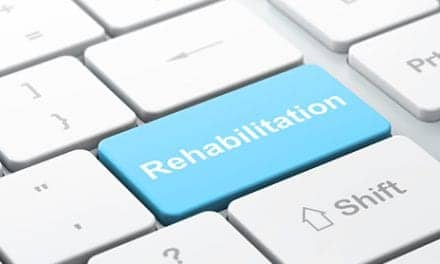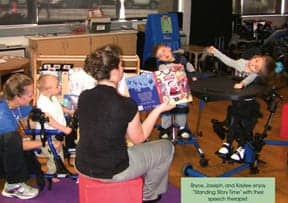Many children diagnosed with cerebral palsy (CP) exhibit crouch gait—characterized by excessive flexion of the hips, knees, or ankles. A study demonstrates a robotic training method that may help improve posture and walking in children with crouch gait.
The method improves posture and walking in children with crouch gait by enhancing their muscle strength and coordination, according to the study, published recently in Science Robotics.
“One of the major reasons for crouch gait is weakness in soleus muscles,” says Sunil Agrawal, professor of mechanical engineering and of rehabilitation and regenerative medicine at Columbia Engineering, and research team leader, in a media release from Columbia University School of Engineering and Applied Science.
“We hypothesized that walking with a downward pelvic pull would strengthen extensor muscles, especially the soleus, against the applied downward pull and would improve muscle coordination during walking. We took an approach opposite to conventional therapy with these children: instead of partial body weight suspension during treadmill walking, we trained participants to walk with a force augmentation,” adds Agrawal, also a member of the Data Science Institute.
The team hypothesized that strengthening the soleus might help children with crouch gait to stand and walk more easily.
To test their hypothesis, the research team developed a wearable, lightweight, cable-driven robotic system, called Tethered Pelvic Assist Device (TPAD), in Agrawal’s Robotics and Rehabilitation (ROAR) Laboratory. The system can be programmed to provide forces on the pelvis in a desired direction as a subject walks on a treadmill.
The team then worked with six children diagnosed with CP and exhibiting crouch gait for fifteen 16-minute training sessions over 6-week period. While the children walked on treadmills, they wore the TPAD as a lightweight pelvic belt to which several wires were attached. The tension in each TPAD wire was controlled in real time by a motor placed on a stationary frame around the treadmill, based on real-time motion capture data from cameras, the release explains.
The researchers programmed the TPAD to apply an additional downward force through the center of the pelvis to intensively retrain the activity of the soleus muscles. They used a downward force equivalent to 10% of body weight, based on the results of healthy children carrying backpacks. This was the minimum weight needed to show notable changes in posture or gait during walking.
The team examined the children’s muscle strength and coordination using electromyography data from the first and last sessions of training and also monitored kinematics and ground reaction forces continuously throughout the training. They found that their training was effective; it both enhanced the children’s upright posture and improved their muscle coordination. In addition, their walking features, including step length, range of motion of the lower limb angles, toe clearance, and heel-to-toe pattern, improved, the release continues.
“Currently, there is no well-established physical therapy or strengthening exercise for the treatment of crouch gait,” Agrawal notes, in the release.
Heakyung Kim, A. David Gurewitsch Professor of Rehabilitation and Regenerative Medicine and Professor of Pediatrics at the Columbia University Medical Center, who treats these patients, adds in the release that, “Feedback from the parents and children involved in this study was consistent. They reported improved posture, stronger legs, and faster walking speed, and our measurements bear that out. We think that our robotic TPAD training with downward pelvic pull could be a very promising intervention for these children.”
Further studies include more clinical trials, to test a larger group and with changing variables. The researchers are also considering studying children with hemiplegic/quadriplegic CP.
[Source(s): Columbia University School of Engineering and Applied Science, Science Daily]
[Photo credit: Sunil Agrawal/Columbia Engineering]





